
McArthur Binion
DNA: Sepia: II, 2016
Signed, titled, and dated on reverse
Oil paint stick, sepia ink, and paper on board
96 x 72 inches (243.8 x 182.9 cm)
(GL10717)
Galerie Lelong & Co. is pleased to present EPIC. This new online viewing room explores selected large-scale paintings by McArthur Binion, Sean Scully, Kate Shepherd, Tariku Shiferaw, Mildred Thompson, and Juan Uslé. The online presentation coincides with the gallery’s current exhibition in New York—Juan Uslé: HORIZONTAL LIGHT that includes multiple monumental pieces. Installed in our viewing room, the gallery’s history of work with abstract painting is revealed with each work that expansively carries the artist’s vocabulary across the canvas and investigates a commanding scale.
To schedule a viewing appointment or for any sales enquiries, please email us at art@galerielelong.com.

McArthur Binion
DNA: Sepia: II, 2016
Signed, titled, and dated on reverse
Oil paint stick, sepia ink, and paper on board
96 x 72 inches (243.8 x 182.9 cm)
(GL10717)
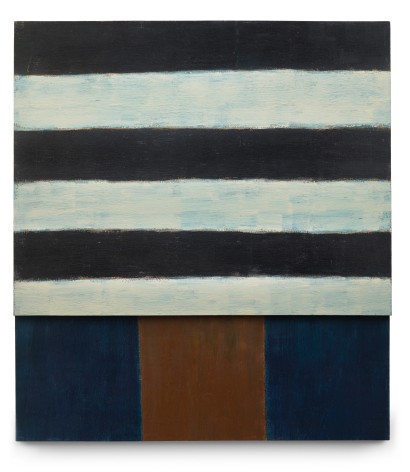
Sean Scully
Wait, 1986
Signed, titled and dated on reverse
Oil on two joined canvases
83 x 75 x 5 1/2 inches (210.8 x 190.5 x 14.5 cm)
(GL8815)
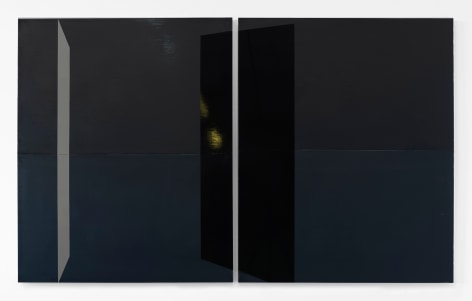
Kate Shepherd
Pond, 2019
Enamel on panel, signed on reverse
Diptych; each: 58 x 48 inches (147.3 x 121.9 cm)
Overall: 58 x 96 inches (147.3 x 243.8 cm)
(GL14289)
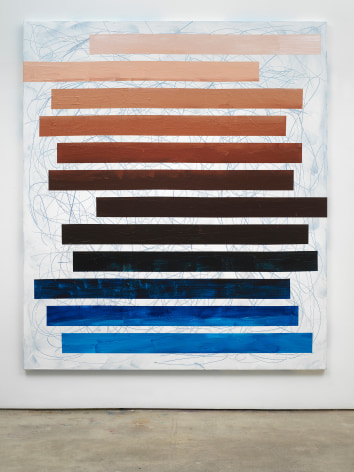
Tariku Shiferaw
Hey There (Dej Loaf), 2021
Acrylic on canvas, signed on reverse
96 x 84 inches (243.8 x 213.4 cm)
(GL14975)

Installation view: McArthur Binion, DNA: Sepia: II, 2016.
MCARTHUR BINION
Over the course of a career spanning more than 40 years, McArthur Binion has cultivated a unique visual style that involves building an “under conscious” to his paintings with repetitious photocopies of private documents such as his birth certificate and his hand-written address book.
DNA: Sepia: II, 2016 is from the artist’s seminal “DNA” series and follows the “Seasons” and “DNA” paintings. Binion looked to introduce a third element and when he laid the sepia ink on top of the under conscious of the painting, he discovered an alchemic response of colors.
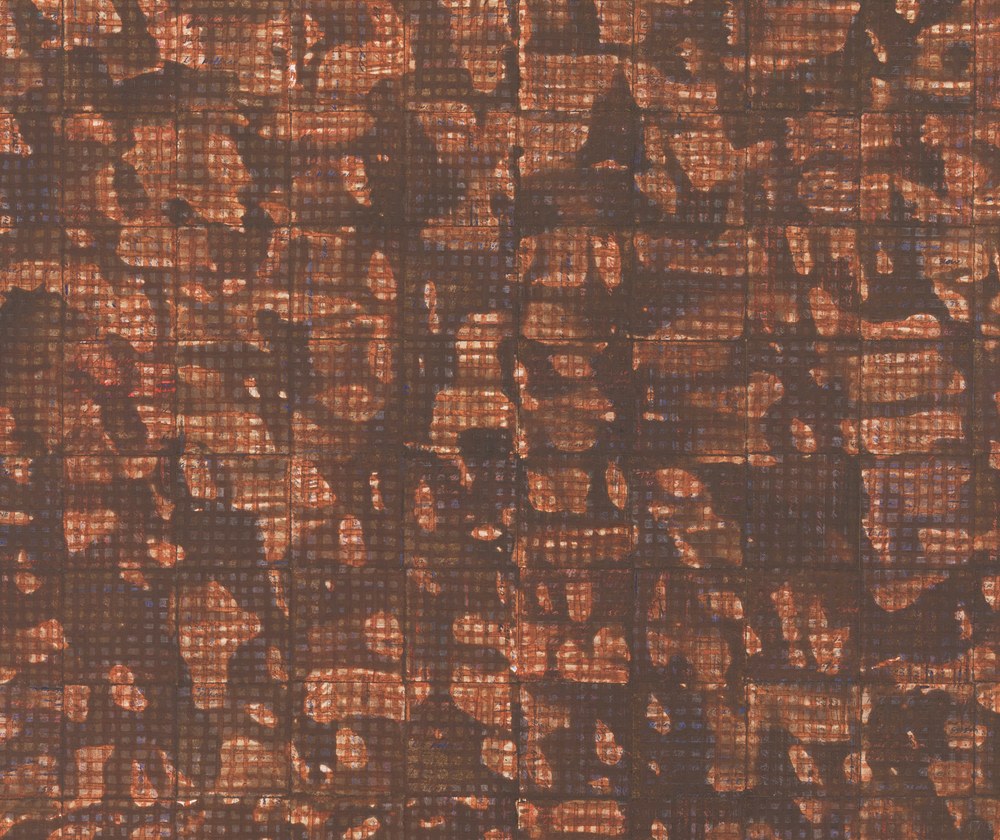
Details: McArthur Binion, DNA: Sepia: II, 2016.
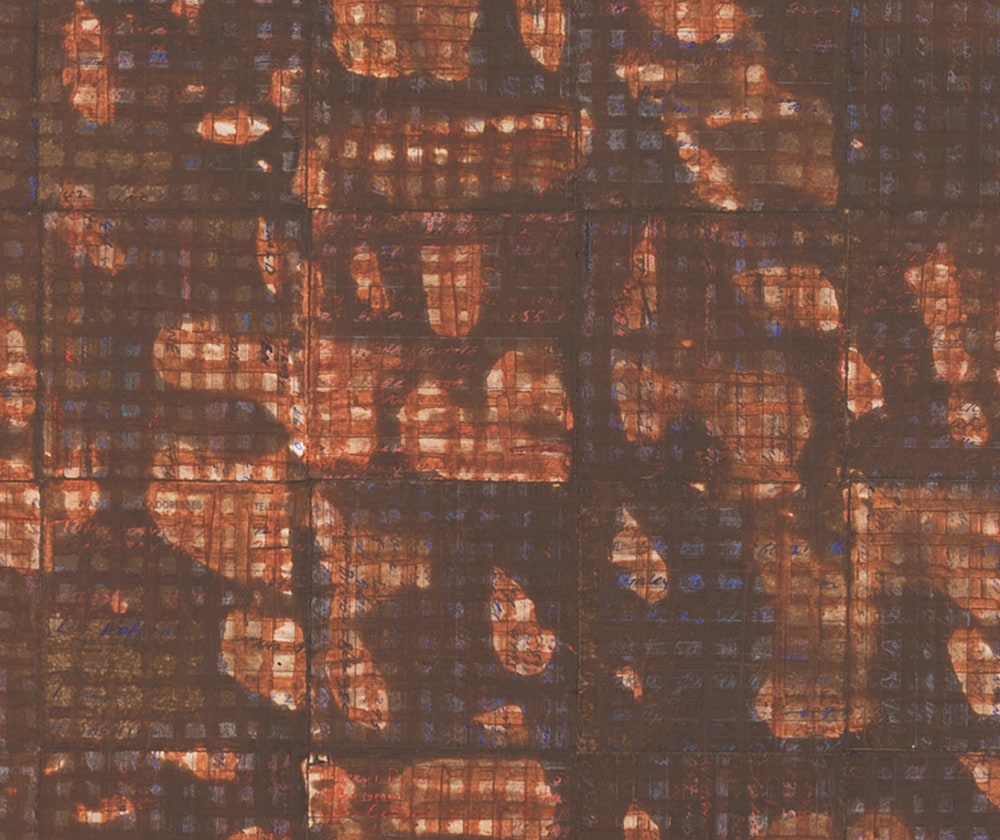
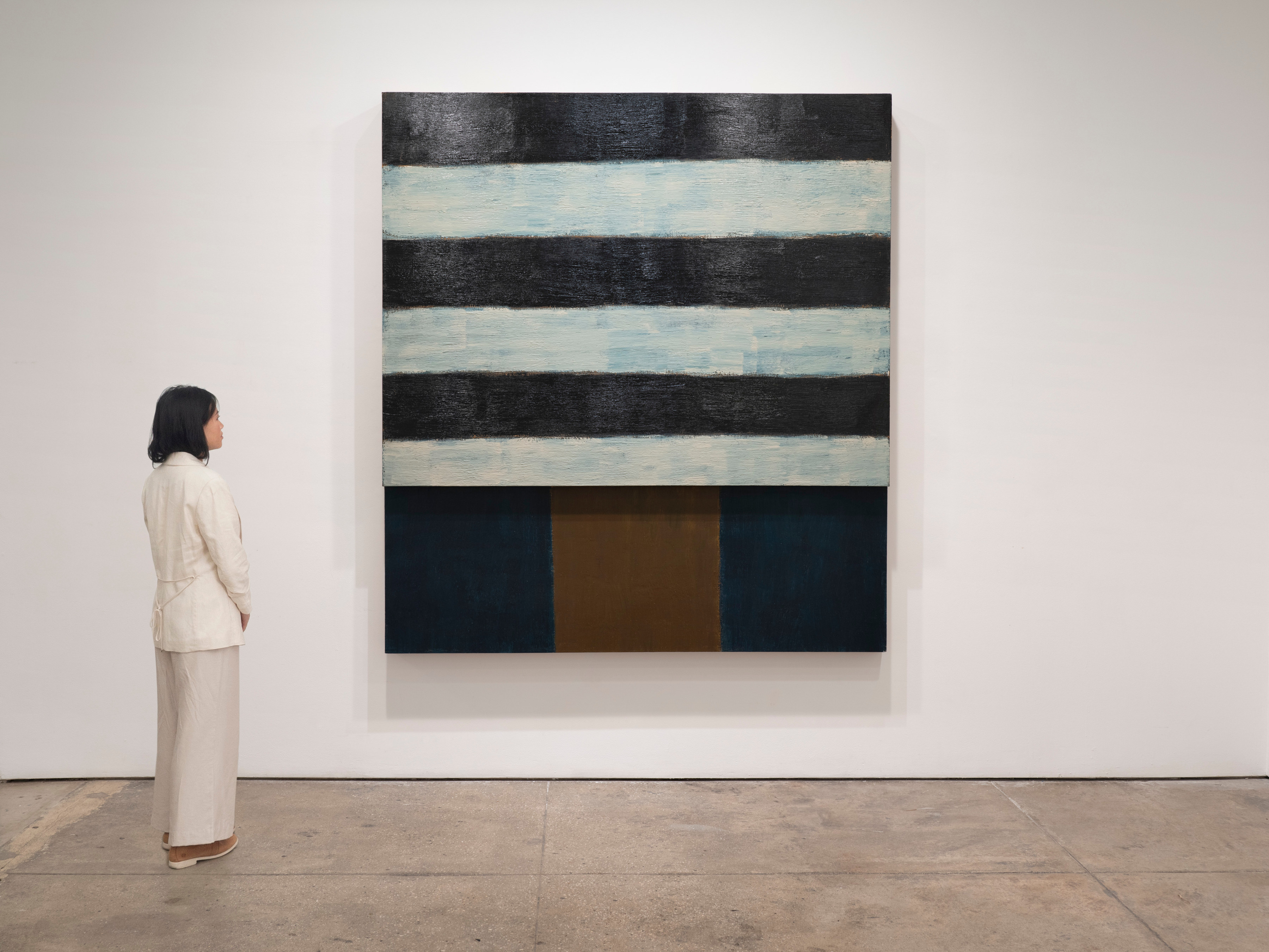
Installation view: Sean Scully, Wait, 1986.
SEAN SCULLY
Sean Scully continues to be one of the most important painters working today. In the 1980s he began pairing panels of different sizes as seen in Wait, 1986. By employing this technique, the illusion of three-dimensionality is present alongside
Scully's signature practice of using rigorous compositions of horizontals and verticals, fields of rich hues and brushwork, and a delicate balance of luminosity and shadow.
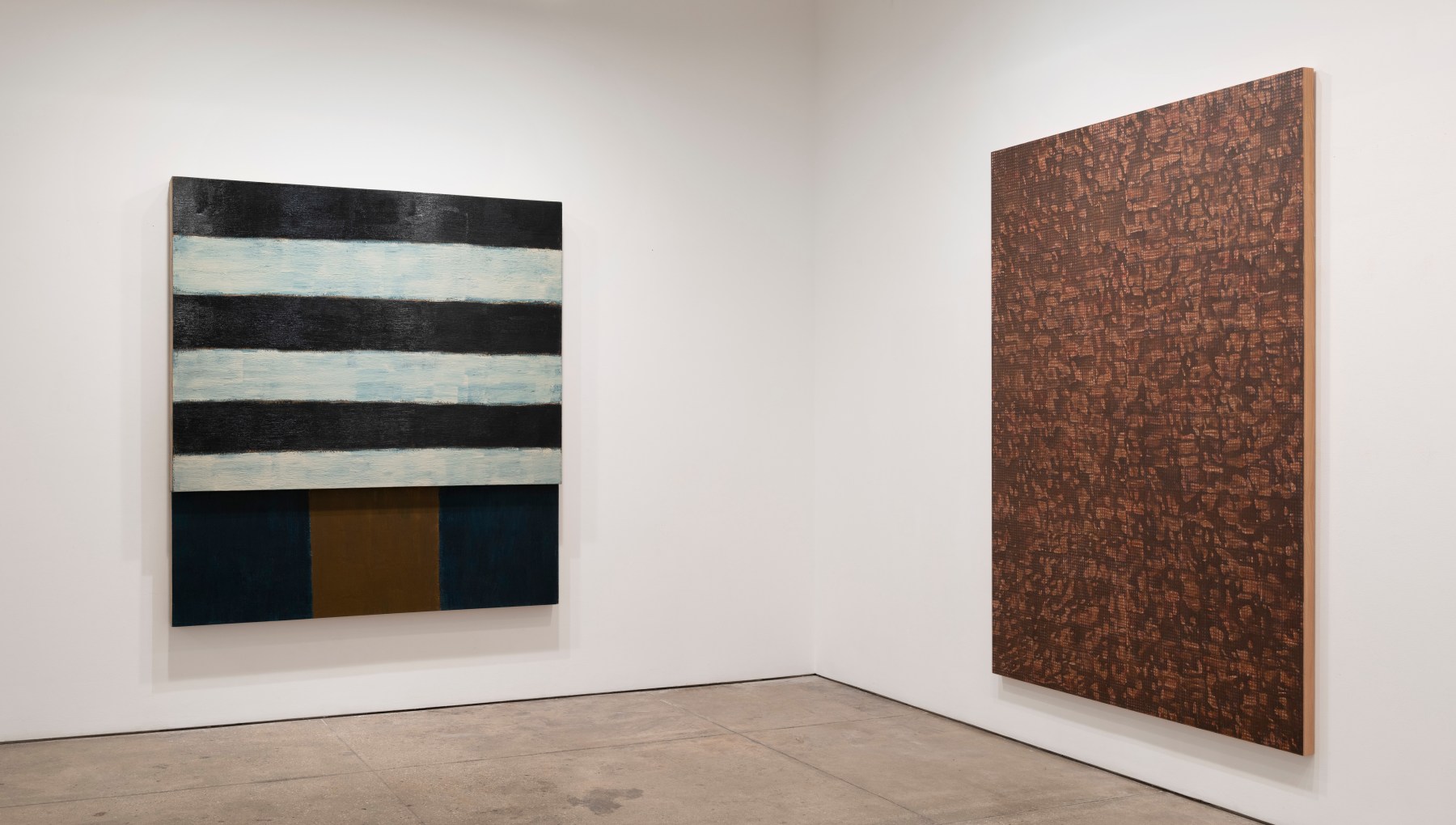
Installation view: Sean Scully, Wait, 1986 and McArthur Binion, DNA: Sepia: II, 2016.

Installation view: Kate Shepherd, Pond, 2019.
KATE SHEPHERD
This impressive diptych from Kate Shepherd comes from the artist’s latest body of work that incorporates chromatic trapezoids that cut through the picture plane. These shapes—which the artist calls “surrogate paintings”—function as
architectonic premises, delineating volume and the space between them. Shepherd defines these forms through difference in textures, rather than with her signature fine lines.
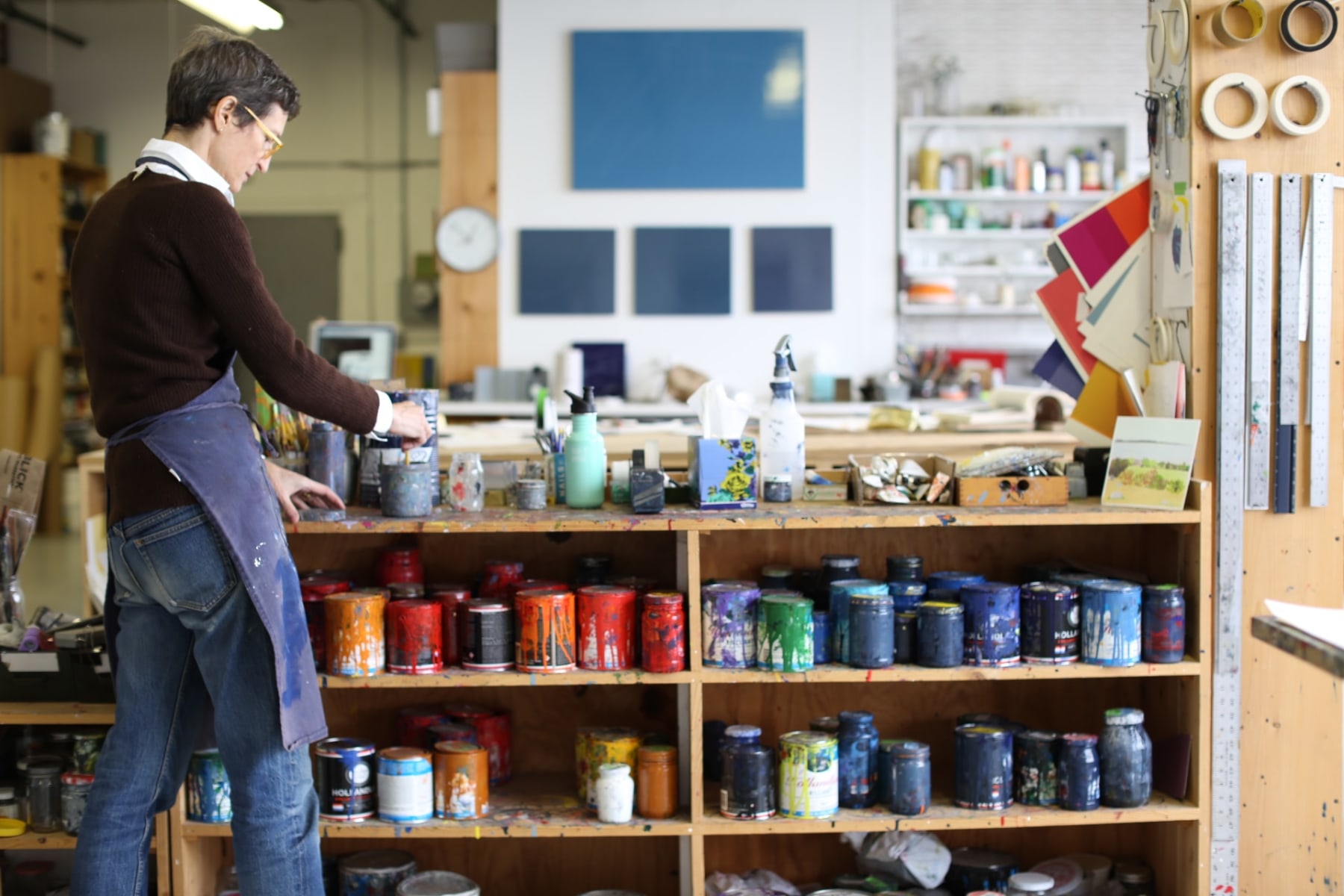
ABOUT THE ARTIST
Kate Shepherd (b. 1961, New York City) is known for her richly colored paintings built with layers of monochromatic enamel. Chief among Shepherd’s concerns is the relationship of her paintings to their environs; the various reflective surfaces establishing a spatial discourse across the panel, the viewer, and the gallery space. In her decades-long exploration of perspectival space, Shepherd has most recently defined these forms through difference in textures, rather than with her signature fine lines. She interrupts the glossy quality of the enamel, sanding large areas down to produce velvety fields that show pentimenti of color and faint lines of obliterated brushstrokes. This method results in forms that hold a gleaming, reflective surface, which allows the viewers to see their own reflections and also guards the intimate image from view. Joined wood panels, connoting the architecture for which the paint is meant, are the base of the paintings. The artist’s oeuvre also encompasses works on paper, which examine her constant evolution of the exploration of primary, secondary, and tertiary color. Read more
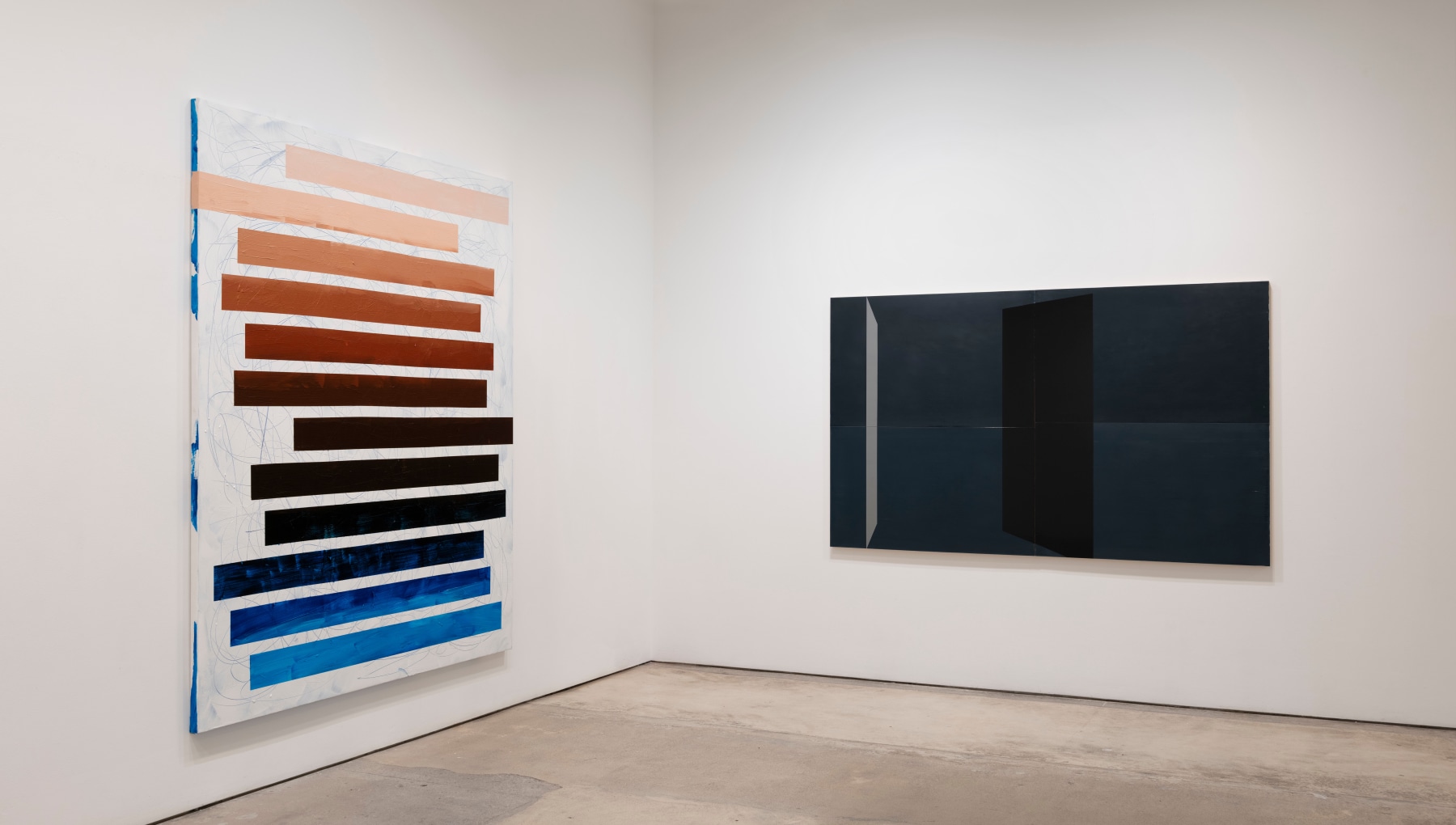
Installation view: Tariku Shiferaw, Hey There (Dej Loaf), 2021 and Kate Shepherd, Pond, 2019.

Installation view: Tariku Shiferaw, Hey There (Dej Loaf), 2021.
TARIKU SHIFERAW
This new work from Tariku Shiferaw continues the artist’s work with ambitious scale. Titled after songs from musical genres by artists of the African diaspora such as Hip-hop, R&B, Reggae, Afrobeats, Blues, and Jazz, his paintings reiterate the artists’ stage names and song titles.
The works intentionally hold space for the Black persons and cultures they represent. For Shiferaw, working in abstraction entails a re-envisioning of identity and form, the gestural surface in his paintings and mark-making is his reclamation of a space that was denied to many artists.

ABOUT THE ARTIST
Tariku Shiferaw (b. 1983, Addis Ababa, Ethiopia, lives and works in New York City) is known for his practice of mark-making that explores the metaphysical ideas of painting and societal structures. This formal language of geometric abstraction is executed through densely layering material to create “marks,” gestures that interrogate space-making and reference the hierarchy of systems. As the artist explains, “A mark, as physical and present as cave-markings… reveals the thinker behind the gesture—an evidence of prior markings of ideas and self onto the space.” Read more
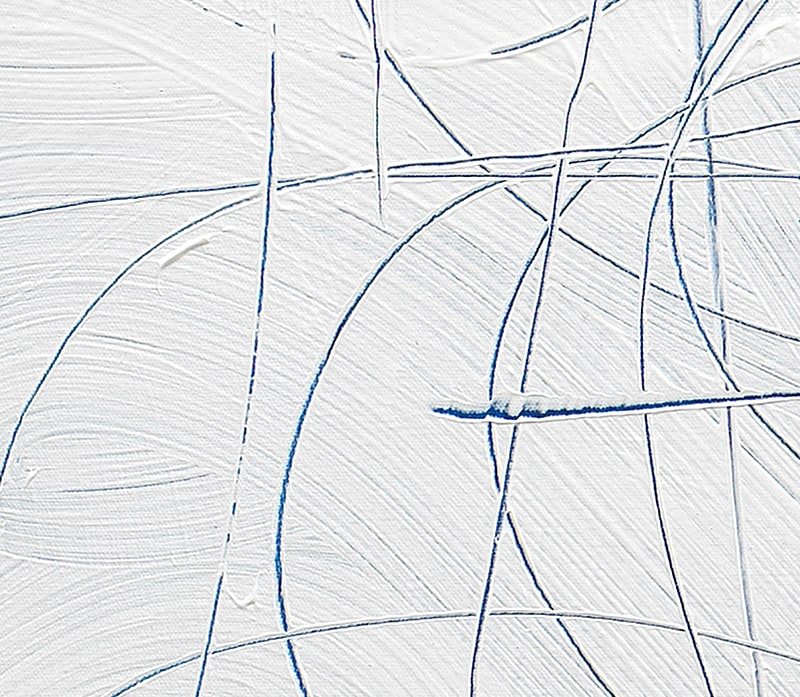
Details: Tariku Shiferaw, Hey There (Dej Loaf), 2021.


Installation view: Mildred Thompson, Radiation Explorations, 1994.

Details: Mildred Thompson, Radiation Explorations, 1994.

MILDRED THOMPSON
When Thompson made her final return to the United States after years abroad in Europe in self-imposed exile, her new studio allowed her to paint in a large scale. Her seminal Radiation Explorations paintings are characterized by blue backgrounds with the occasional incorporation of white.
The artist’s personal interpretations of invisible worlds, such as sound and space, manifest as vibrant colors and energetic lines. Though her paintings are not literal translations, they embody an emotional understanding of complex concepts through expressive, rhythmic mark-making.
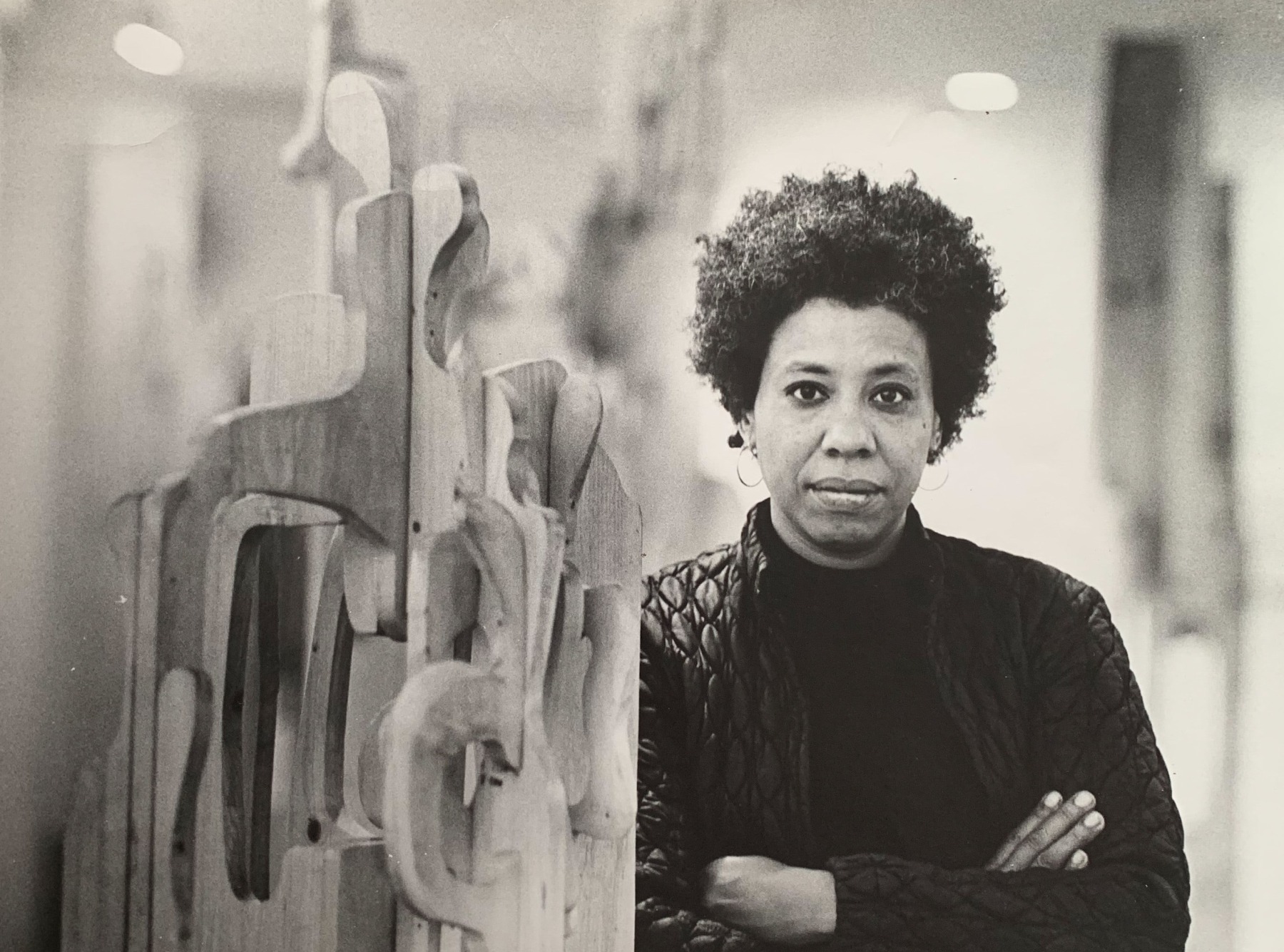
ABOUT THE ARTIST
In a prolific career spanning over four decades, Mildred Thompson (b. 1936, Jacksonville, Florida – d. 2003, Atlanta, Georgia) created paintings, drawings, prints, and sculptures using a distinctly unique language of abstraction. Thompson’s paintings and works on paper are characterized by energetic mark-making, profound understanding of color, and complex compositions that absorb the viewer. She was interested in physics and astronomy and through her own interpretation, sought to visually represent scientific theories and systems that are invisible to the eye. Due to the racism and sexism she experienced in the United States, Thompson spent the majority of her career in Germany and France where she created many established bodies of work and exhibited widely. Thompson’s work has received increasing institutional attention in recent years as understandings of abstraction shift to become more inclusive to women artists of color. Read more
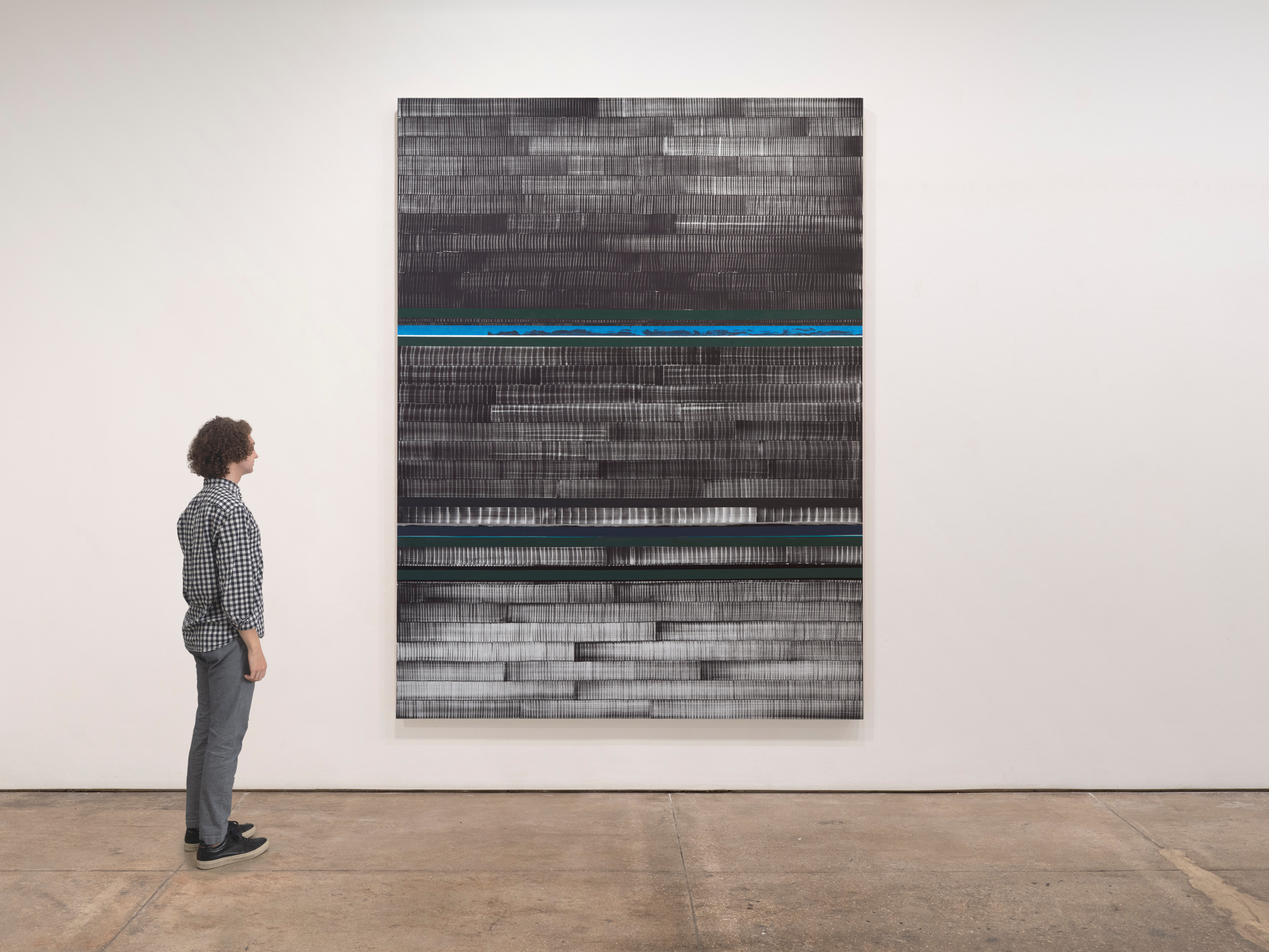
Installation view: Juan Uslé, Soñé que revelabas (Loire), 2021.
JUAN USLÉ
Juan Uslé’s work is widely recognized for gestural brushstrokes that are systematically applied to canvas while guided by the artist’s own heartbeat. The sequential rhythm resulting from this performative act generates a vibrating, atmospheric sensation of varying intensity.
Up close the brushstrokes reveal a state of intrinsic duality: repetition yet singularity. This work comes from the artist’s continued series, Soñe que revelabas [I Dreamt That You Revealed].
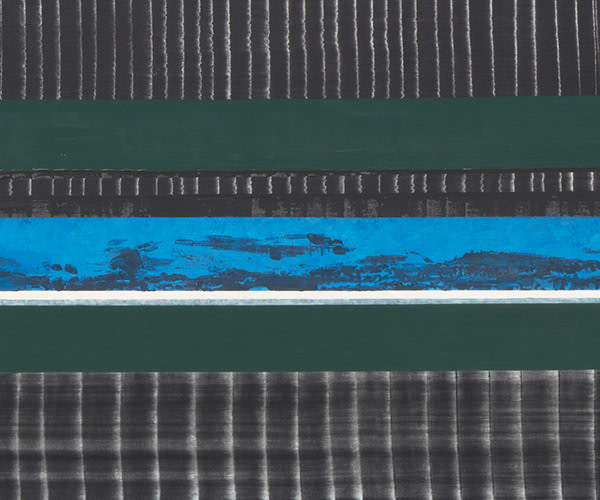
Details: Juan Uslé, Soñé que revelabas (Loire), 2021.
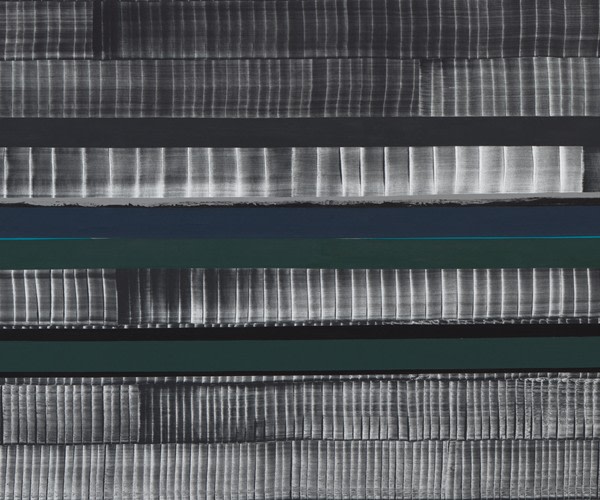
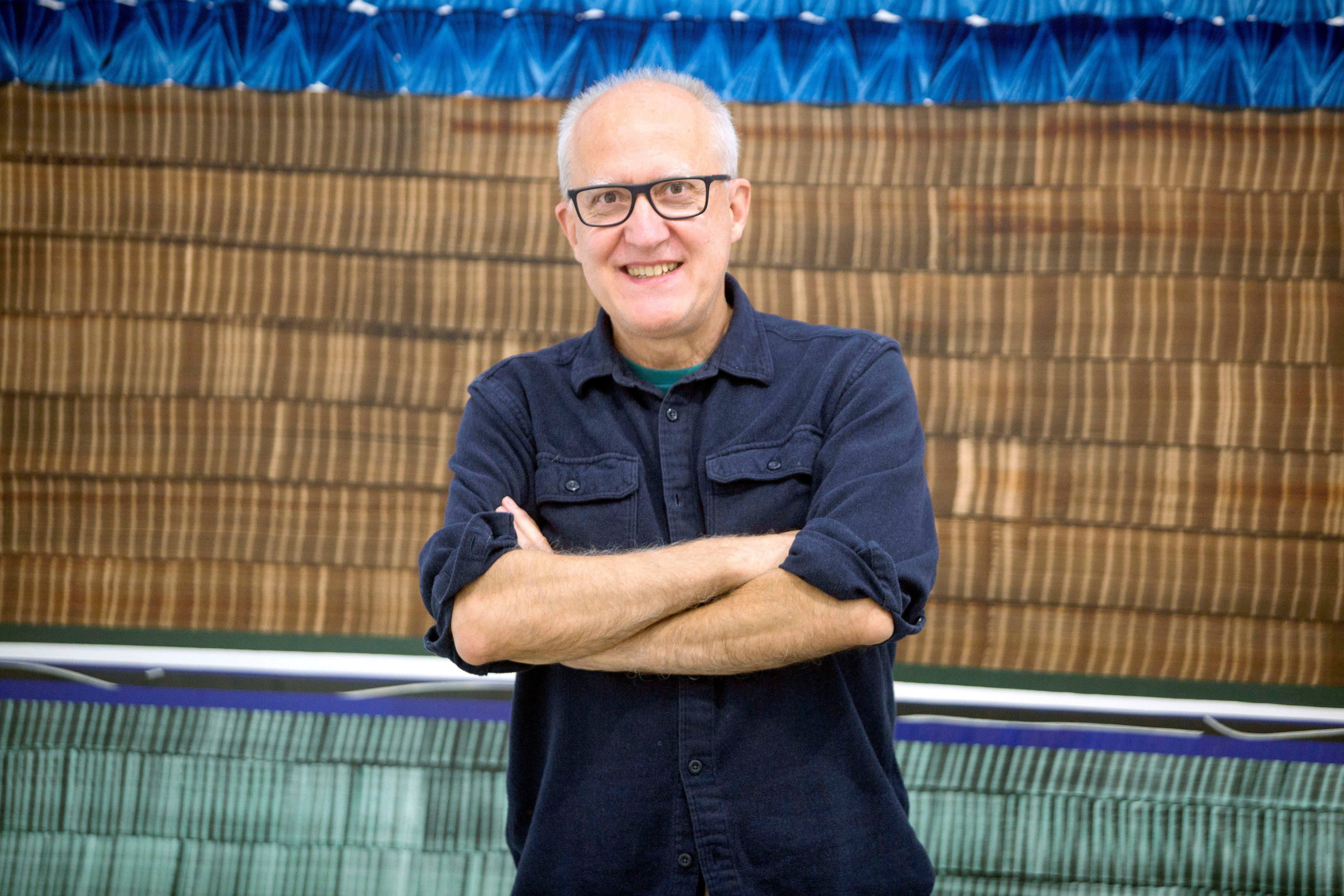
ABOUT THE ARTIST
Juan Uslé (b. 1954, Santander, Spain) is widely recognized for vivid paintings and works on paper that engage the viewer with entrancing rhythmic patterns. These patterns are composed of systematic brushstrokes that exist in a dual state: embracing repetition while practicing singularity. Sourcing inspiration from memories both lived and dreamt, these patterns can be evocative of the vibrations in bustling New York City; echo the fluidity of bodies of water; or serve as a transcript of real time through a filmstrip-like recording of the artist’s own heartbeat. In over forty years, Uslé has approached his medium, which includes painting and photography, through representational and abstract lenses. In more recent years, the use of light to generate emotion rather than volume has been a central focus for the artist. Read more